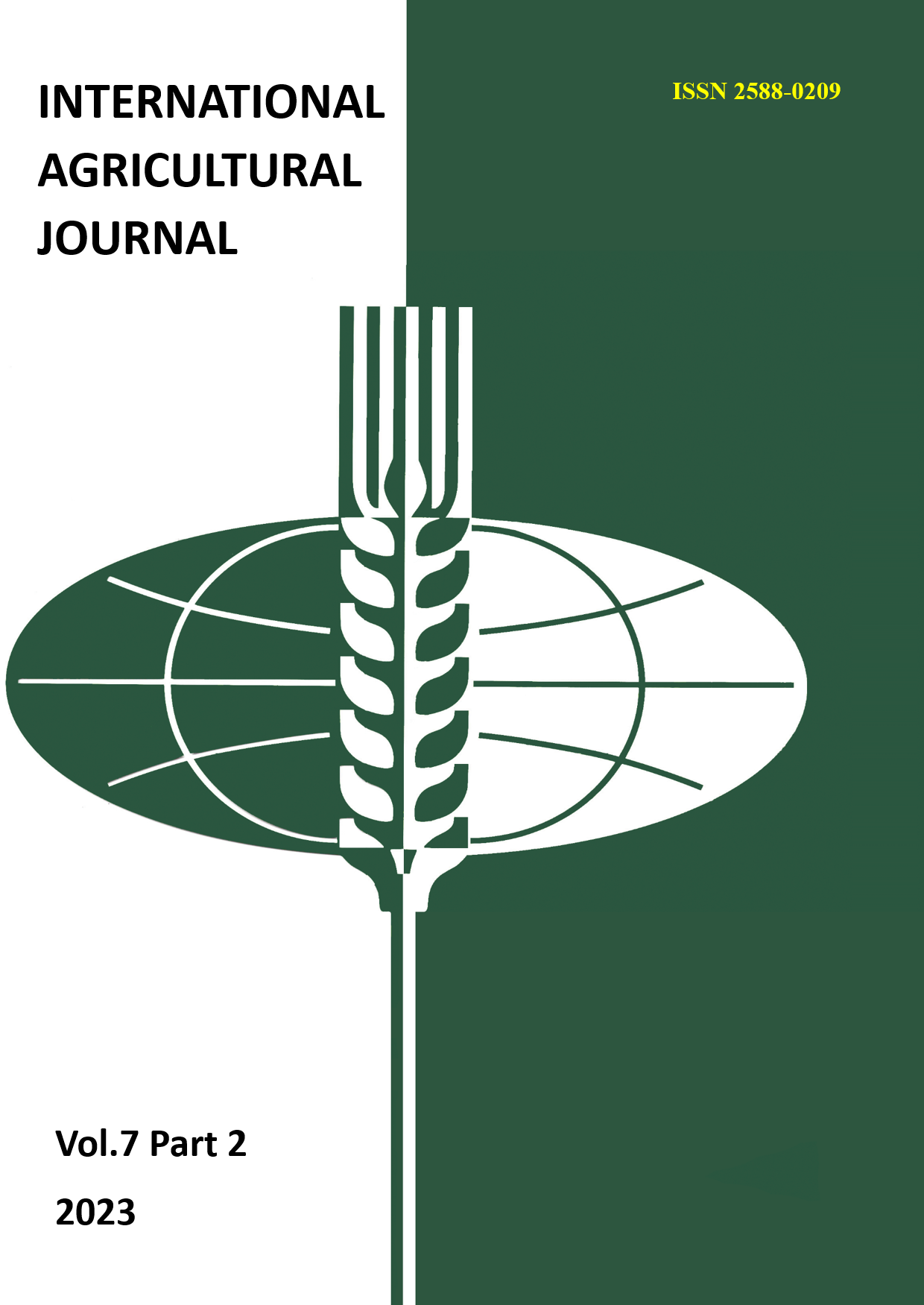TECHNOLOGY OF CREATION OF HIGHLY PRODUCTIVE LANDS ON DRAINED PEAT SOILS OF WESTERN SIBERIA
Main Article Content
Abstract
Large arrays of swamp landscapes in Western Siberia occupy large areas of interfluvial spaces. The area of swamps in the taiga, subtaiga and forest-steppe subzones is 32.538 million hectares, of which about 5.0 million hectares are located in the agricultural zone. In their natural state, these landscapes are almost not used in agriculture. Involving them in circulation, on the basis of extensive land reclamation, will allow to intensify agricultural production and expand the area under crops, pastures and productive meadows.
Peat soils of lowland bogs are among the most fertile soils. In terms of nitrogen and organic matter reserves, they are richer than chernozems [1]. There are over 300 thousand hectares of drained lowland swamps in the region under consideration, including about 90 thousand hectares in the Tyumen region [2].
The drainage of peat bogs with subsequent plowing, processing, fertilization and application of crop rotations leads to the restructuring of the regimes of the drained layer, increasing its productivity. Therefore, adaptive complexes of reclamation measures should maximally "fit" into the natural conditions of swamp landscapes, ensure reasonable economic efficiency and environmental sustainability.
The scientific justification and effective application of reclamation and agrotechnological measures to obtain stable, high yields of agricultural crops should be based on a comprehensive, in–depth study of the patterns of formation of soil regimes, one of which is food, which determines the fertility of peat-bog soils.
The paper presents the results of long-term studies of the productivity of drained peat soils of the forest-steppe and subtaiga subzones of Western Siberia.
Article Details
References
2. Novokhatin V.V., Tyubua A. Theoretical aspects of reclamation development of swamp geosystems of Western Siberia. Moscow Economic Journal" (QJE.SU ). 2020. - No. 5.
3. Seidelman F.R. Agro-landscape zoning for agriculture and soil reclamation of the wet zone. MiVH. 1997. - No. 2. - pp. 15-21.
4. Motorin A.S. Fertility of peat soils of Western Siberia. Land reclamation and water resources management. 1, 2020. – pp. 16-22.
5. Golovaty V.G., Dobrachev Yu.P., Yurchenko I.F. Models of productivity management of reclaimed agrocenoses. - M., Russian Agricultural Academy, 2001. - 166 p.
6. Inisheva L.I., Liss O.L., Marmulev A.N. et al. The concept of rational use of peat resources in Russia. - Tomsk: TsNTI, 2003. – p. 60.
7. Kireicheva L.V., Belova I.V. Formation of a highly productive agricultural landscape on reclaimed lands. Land reclamation and water resources management, 2009. -No. 4 - pp. 19-22.
8. Wijk A.L.M. and Feddes R.A. Simulating effects of soil type and drainage on arable crop yield // Agricultural Water Management. Proc. Symp. on Agric. Wat. Man., Arnhem. 18-21 June 1985. A.A. Balkema, Rotterdam. 1986. - pp. 97-112.
9. Maslov B.S. Modern issues of the use of swamps in agriculture // High technologies of extraction, deep processing and use of lake-marsh sediments / Materials of the conference. – Tomsk. 2013.- pp. 41-59.

